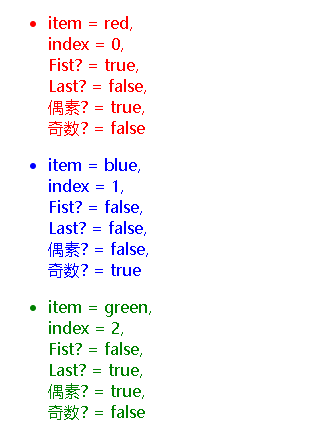特性模块
坚持为应用中每个明显的特性创建一个 Angular 模块
坚持把特性模块放在与特性区同名的目录中(例如 app/heroes)
坚持特性模块的文件名应该能反映出特性区的名字和目录(例如 app/heroes/heroes.module.ts)
共享特性模块
坚持在 shared 目录中创建名叫 SharedModule 的特性模块(例如在 app/shared/shared.module.ts 中定义 SharedModule)
坚持在共享模块中声明那些可能被特性模块引用的可复用组件、指令和管道
坚持在 SharedModule 中导入所有模块都需要的资产(例如 CommonModule 和 FormsModule)
核心特性模块
考虑把那些数量庞大、辅助性的、只用一次的类收集到核心模块中,让特性模块的结构更清晰简明
坚持在 core 目录下创建一个名叫 CoreModule 的特性模块(例如在 app/core/core.module.ts 中定义 CoreModule)
坚持把要共享给整个应用的单例服务放进 CoreModule 中(例如 ExceptionService 和 LoggerService)
很多只用一次的组件(例如加载动画、消息浮层、模态框等),它们只会在 AppComponent 的模板中出现。 不会在其它地方导入它们
服务
组件的工作只管用户体验,而不用顾及其它。 它应该提供用于数据绑定的属性和方法,以便作为视图和应用逻辑的中介者
组件应该把诸如从服务器获取数据、验证用户输入或直接往控制台中写日志等工作委托给各种服务。通过把各种处理任务定义到可注入的服务类中,你可以让它被任何组件使用
- 插值表达式
- for循环
- 事件和属性绑定
- 双向绑定
- if
- ngSwitch
- 模板引用变量
- 管道
- 属性型指令
- 结构型指令
- ViewChild
- children
- 绑定class
- 绑定style
- 设置proxy
- ng-container
插值表达式
<div>{{ title }}</div>
<div>{{ true ? 1 : 2}}</div>
<div>{{ title() }}</div>
<div>{{ null ?? 'x' }}</div>
<div>{{ title?.name }}</div>
<div>{{ titles?.[0] }}</div>
// 变量与字符串的拼接
<li *ngFor="let item of arr" title="{{item}}.txt">{{item}}</li>
<li *ngFor="let item of arr" [title]="item + '.txt'">{{item}}</li>
// 渲染dom标签
<div [innerHTML]="h"></div>
h = `<h2>title</h2>`
for循环
trackByFn 返回唯一id
<li *ngFor="let item of items; index as i; trackBy: trackByFn">...</li>
trackByName(index, it) {
return it.id;
}
arr = ['red', 'blue', 'green'];
<ul *ngFor="let item of arr; index as i; first as f; last as l; even as e; odd as o">
<li [style.color]="item">
item = {{ item }},<br />
index = {{ i }},<br />
Fist? = {{ f }},<br />
Last? = {{ l }},<br />
偶素? = {{ e }},<br />
奇数? = {{ o }}<br />
</li>
</ul>

@Pipe({name: 'demoNumber'})
export class DemoNumber implements PipeTransform {
transform(value, args:string[]) : any {
let res = [];
for (let i = 0; i < value; i++) {
res.push(i);
}
return res;
}
}
<ul>
<li>Method First Using PIPE</li>
<li *ngFor='let key of 5 | demoNumber'>
{{key}}
</li>
</ul>
硬编码
<ul>
<li>Method Second</li>
<li *ngFor='let key of [1,2]'>
{{key}}
</li>
</ul>
事件和属性绑定
<button (click)="alert()" [title]="title">click</button>
双向绑定
import { FormsModule } from '@angular/forms';
@NgModule({
imports: [FormsModule] // 需要这个模块,通常在shared模块中导出
})
<input type="text" name="name" [(ngModel)]="name" /> {{ name }}
展开双向绑定
<input type="text" name="name" [(ngModel)]="name" (ngModelChange)="nameChange($event)"/> {{ name }}
name = "ajanuw";
nameChange(v: string) {
this.name = v.toLocaleUpperCase();
}
if
myName = '';
ngOnInit() {
setTimeout(() => this.myName = 'alone', 2000);
}
<p *ngIf="myName; else elesTemp" >{{ myName }}</p>
<ng-template #elesTemp>
<p> 暂无数据!</p>
</ng-template>
if/then/else
<p *ngIf="myName; then thenTemp; else elesTemp"></p>
<ng-template #thenTemp>
<p>{{ myName }}</p>
</ng-template>
<ng-template #elesTemp>
<p> 暂无数据!</p>
</ng-template>
ngSwitch
<div [ngSwitch]="name">
<p *ngSwitchCase="'ajanuw'">hello {{name}}</p>
<p *ngSwitchCase="'coo'">bey bey {{name}}</p>
<p *ngSwitchCase="'boo'">i'm {{name}}...</p>
<p *ngSwitchDefault>not name!</p>
</div>
模板引用变量
<div>{{ name.name }}_{{ name.value }}</div>
<input type="text" name="name" value="123" #name />
<button (click)="onClick(name.value)">click me</button>
onClick(v: string) {
l(v); // 123
}
// 获取组件实例(只能在模板中调用),类似react使用ref获取组件实例
<app-hello #hello></app-hello>
<button (click)="hello.event()">click me</button>
管道
<p>{{ 'ajanuw' | uppercase }}</p> 全大写 -> AJANUW
<p>{{ 'Ajanuw' | lowercase }}</p> 全小写 -> ajanuw
<p>{{ 'hi ajanuw' | titlecase }}</p> 单词首写大写 -> Hi Ajanuw
<p>{{ {name: 'ajanuw'} | json }}</p> onj => json
<p>{{ 'ajanuw' | slice:1:3 }}</p> 类似js的slice -> ja
处理number
<p>{{ 3.141 | number:'1.2-2' }}</p> -> 3.14
<p>{{ 3.141 | number:'1.1-3' }}</p> -> 3.141
<p>{{ 3.141 | number:'2.1-1' }}</p> -> 03.1
<p>{{ 3.141 | number:'2.4-4' }}</p> -> 03.1410
<p>{{ 0.5 | percent }}</p> 百分比 -> 50%
<p>美元: {{ 5 | currency }}</p> 这两个都没什么卵用
<p>英镑:{{ 5 | currency:'GBP' }}</p>
- 创建
ng g @schematics/angular:pipe mathCeil --project=angular-universal --module=app.module.ts --no-spec
- 使用
<div>{{ 12.3 | mathCeil: 2 }}</div>
- 实现
import { Pipe, PipeTransform } from "@angular/core";
@Pipe({
name: "mathCeil",
})
export class MathCeilPipe implements PipeTransform {
/**
* @param value 传入的值
* @param args 传入的参数
*/
transform(value: number, args?: number): any {
console.log(args); // 2
return Math.ceil(value);
}
}
父子组件传递参数 组件之间的交互
<app-hello [name]="name" (onAlert)="onAlert($event)"></app-hello>
name = "ajanuw";
onAlert(v: string) {
l(v);
}
Input输入, Output 输出
<h2 (click)="handleClick()">{{name}}</h2>
@Input() name: string;
@Output() onAlert = new EventEmitter<string>();
handleClick() {
this.onAlert.emit("hello...");
}
属性型指令
- 创建指令
ng g directive highlight
- 使用
<h1 [appHighlight]="'blue'" [defaultColor]="'#f48'">Welcome to {{ title }}!</h1>
- 实现
import { Directive, ElementRef, HostListener, Input } from "@angular/core";
const l = console.log;
@Directive({
selector: "[appHighlight]",
})
export class HighlightDirective {
@Input("appHighlight")
public color: string; // 设置选中时的颜色
// 初始化时的颜色
@Input()
public set defaultColor(color: string) {
this.setColor(color);
}
// el: 获取指令绑定的dom元素
constructor(private readonly el: ElementRef) {}
// 响应用户引发的事件
@HostListener("mouseenter")
public onMouseEnter(): void {
this.setColor(this.color || "red");
}
@HostListener("mouseleave")
public onMouseLeave(): void {
this.setColor(null);
}
private setColor(color: string): void {
this.el.nativeElement.style["color"] = color;
}
}
结构型指令
- 创建指令
ng g @schematics/angular:directive delay --project=angular-universal --module=app.module.ts --no-spec
- 使用
<div *appDelay="1200">
hello <ng-container *ngIf="!!username"> {{ username }} </ng-container>
</div>
- 实现
delay.directive.ts
import {
Directive,
Input,
TemplateRef,
ViewContainerRef,
OnDestroy,
} from "@angular/core";
@Directive({
selector: "[appDelay]",
})
export class DelayDirective implements OnDestroy {
private timer: NodeJS.Timer;
constructor(
private readonly templateRef: TemplateRef<any>,
private readonly viewContainer: ViewContainerRef,
) {}
// 延迟加载dom
@Input()
public set appDelay(delayNum: number) {
this.timer = setTimeout(() => {
this.viewContainer.createEmbeddedView(this.templateRef);
}, delayNum);
}
ngOnDestroy(): void {
clearTimeout(this.timer);
}
}
ViewChild
获取子组件的实例,和dom节点
<app-hello></app-hello>
<button (click)="onClick()">click me</button>
import { Component, OnInit, AfterViewInit, ViewChild } from "@angular/core";
import { HelloComponent } from "./hello/hello.component";
export class AppComponent implements OnInit, AfterViewInit {
@ViewChild(HelloComponent)
private helloRef: HelloComponent; // 注入HelloComponent实例到helloRef
ngOnInit(): void {}
// 组件的视图初始化之后
ngAfterViewInit() {
this.helloRef.handleOk(); // 调用HelloComponent实例的方法
}
onClick() {
this.helloRef.handleOk();
}
}
获取dom节点
<div #test>hello</div>
@ViewChild("test") public testRef: ElementRef;
ngAfterViewInit(): void {
console.log(this.testRef.nativeElement.textContent); // hello
}
children
ng-content 获取所有children,用select获取指定children,不能重复获取
<app-hello>
<h2>hello</h2>
<footer>footer</footer>
</app-hello>
// app-hello 获取children
<div class="a">
<ng-content select='footer'></ng-content>
<ng-content select='h2'></ng-content>
</div>
? ! $any()
The current hero's name is {{currentHero?.name}} // 安全返回
<div *ngIf="hero">
The hero's name is {{hero!.name}} // 非空断言操作符
</div>
Undeclared members is {{$any(this).member}} // 使用 $any 转换函数来把表达式转换成 any 类型
绑定class
classes = {
'text-danger': true,
'text-success': false,
'p-2': true
};
<p class="a" [class]="'text-danger'">{{ txt() }}</p> // 'text-danger'
<p class="a" [class.text-danger]="true">{{ txt() }}</p> // 'a text-danger'
<p class="a" [ngClass]="classes">{{ txt() }}</p> // 'a text-danger p-2'
绑定style
styles = {
color: 'red',
padding: '1rem',
backgroundColor: '#e5e5ef75',
display: 'inline-block'
};
<p style="font-family: Consolas;" [style.color]="'red'">{{ txt() }}</p>
<p style="font-family: Consolas;" [ngStyle]="styles">{{ txt() }}</p>
设置proxy
proxy.conf.json
{
"/api": {
"target": "http://localhost:5000",
"secure": false,
"pathRewrite": {
"^/api": ""
}
}
}
ngOnInit() {
this.msg$ = this.http.get("/api/ng7", {
responseType: "text",
});
}
ng-container
用来挂载结构型指令, 避免使用多余的 html 元素挂载指令
<div>
hello <ng-container *ngIf="!!username"> {{ username }} </ng-container>
</div>
<div>
hello <span *ngIf="!!username"> {{ username }} </span>
</div>
按键事件
<input #box (keyup.enter)="onEnter(box.value); box.value=''">